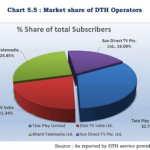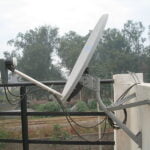Telecom Regulatory Authority of India (TRAI) has amended the New Tariff Order, popularly known as NTO on 01-Jan-2020 and made some very important changes. There are some very interesting data points that TRAI has considered, with respect to the channel pricing in the revised tariff order. As it may not be possible for everyone to read the full order, we have taken some of the important data points on the channel pricing and are presenting in this article.

Channel MRP:
1. Genre-based MRP in the old regime:
Before the NTO, when the pricing deals were entirely between the broadcasters and DPOs, there was a ceiling on the MRP genre-wise as shown below.
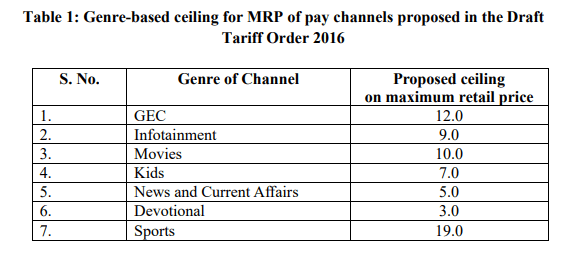
If you read the table, GEC channels had a ceiling set at 12 rupees in the old regime and all the other genres too had their ceiling prices set separately. However, in the NTO, TRAI had decided on a single ceiling of Rs. 19 for the MRP for a given channel to be available as part of a bouquet. Broadcasters had severely misused this condition and have raised the prices of all their popular channels to the maximum ceiling of Rs. 19 irrespective of the genre. See the below table to see how huge the price hike had been for some of the channels in the past year or so.
2. Comparison of prices with the old regime:
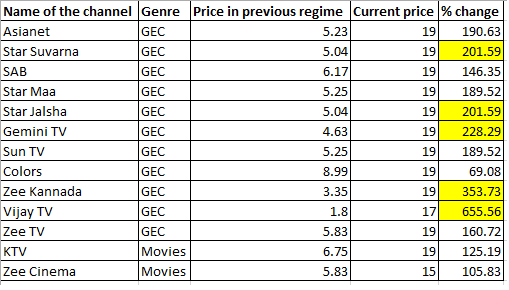
The above table clearly shows that the GEC genre channel prices have been raised exponentially by the broadcasters thereby effectively driving the consumers away from subscribing to them on an al-a-carte basis. The price rise was as high as 655.56 percent for some channels (Vijay TV). To put a check to this out of the world pricing, TRAI has decided to revise the ceiling price to Rs. 12 for any channel to be part of a bouquet, in the revised order.
Bouquets:
Before the NTO, below twin rules were in place for effective relation between bouquet and al-a-carte pricing.
a) The sum of the a-la-carte rates of the pay channels (MRP)forming part of a bouquet shall in no case exceed one and half times the rate of the bouquet of which such pay channels are a part; and
b) The a-la-carte rates of each pay channel (MRP), forming part of a bouquet, shall in no case exceed three times the average rate of a pay channel of the bouquet of which such pay channel is a part.
However, in the NTO, TRAI had removed the above conditions. Initially, it had recommended a 15% percent discount cap on the bouquet pricing compared to the al-a-carte prices, however, the Madras high court ruled against such capping on discount. Subsequently, though SC had equipped TRAI with full power to force the broadcasters to follow this rule, TRAI didn’t do it to observe how the market behaves. And below is what has happened in the last year or so.
1. FTA channels converted to Pay:
Many channels which were FTA in the old regime, have been converted to Pay by the broadcasters so that they can offer them as part of bouquets, clubbing their most popular channels with unpopular channels. As the consumers need the most popular channel, and the al-a-carte price of that channel is more or less same as the bouquet price, they preferred to buy bouquets instead of going al-a-carte, though they may not really watch any other channels that are part of the bouquet. They were made to believe they were getting a better deal, but in reality they were just being misguided. Below are few such channels mentioned in the revised NTO.
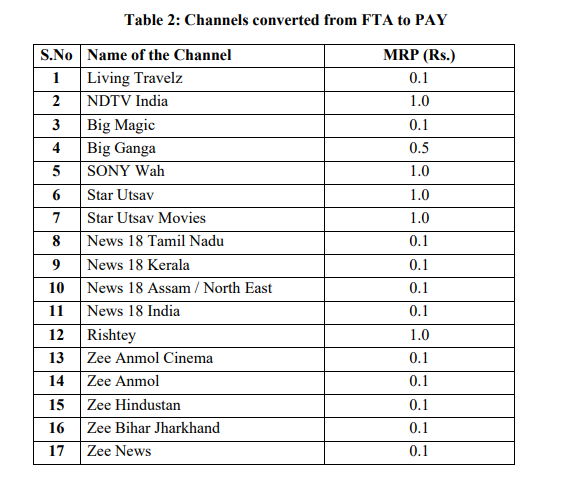
This has also resulted in many pay channels from small broadcasters being converted to FTA, as they don’t have bouquets to offer and couldn’t compete with the big broadcasters.
2. A huge number of bouquets being offered:
Broadcasters started offering a huge number of bouquets, confusing the users and defeating the purpose of a bouquet. The very purpose of the bouquet was to enable the user to select what they want to watch in an easy and cost-effective manner. Below is the number of bouquets offered vs the number of pay channels that each of the major broadcasters offers.
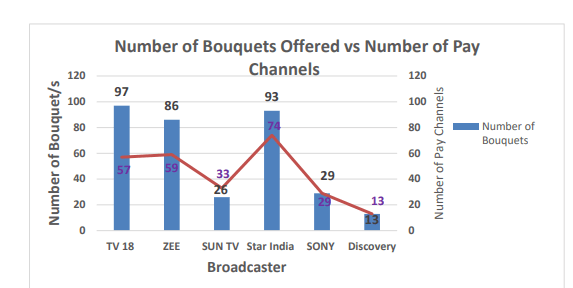
At the outset, it may seem like the consumer has more choice, however, this only created more confusion. Except for Sun network, every other broadcaster offered a higher number of bouquets than the number of pay channels they offer, thereby defeating the very purpose of the bouquets.
3. Illusionary Bouquet pricing:
Broadcasters started offering bouquets at a cheaper price than that of a single channel that is part of a bouquet. TRAI has highlighted several such bouquets in the revised order and a few of them are listed below.

If you look at the above examples, in the Zee Prime Tamil pack SD, the popular channel Zee Tamil which is individually priced at 10 rupees is being offered as part of the bouquet, which is also priced at 10 rupees. Any normal customer would think that he is getting a higher number of channels at the same price and would go for the bouquet. However, in reality, he/she is being denied the choice of selecting the channel he/she wants due to this type of pricing. The same is the case with the bouquets like SVP Lite Hindi and many others.
In view of all this data, TRAI had decided to enforce the old regime conditions w.r.t bouquet pricing and also added a few more conditions to bring relation in the pricing between al-a-carte and bouquets.
Twin Conditions from old regime reinstated:
a) The sum of the a-la-carte rates of the pay channels (MRP)forming part of a bouquet shall in no case exceed one and half times the rate of the bouquet of which such pay channels are a part; and
b) The a-la-carte rates of each pay channel (MRP), forming part of a bouquet, shall in no case exceed three times the average rate of a pay channel of the bouquet of which such pay channel is a part.
Extra conditions:
1) MRP of a channel should not be more than the MRP of any bouquet containing that channel.
2) Only those channels which are having MRP of Rs.12 or less will be permitted to be part of the bouquet offered by broadcasters.
3) The number of bouquets of pay channels not to be more than the number of pay channels offered by a broadcaster.
Now, we would have to wait and see if the broadcasters will still resort to finding loopholes in the revised conditions too. For instance, they might resort to techniques like increasing the prices of their low-value channels to keep the bouquet pricing in accordance with the new changes. However, consumers should be mindful of this and go for al-a-carte channels thereby avoiding the useless channels from broadcasters. It would be interesting to see whether the broadcasters will bring down the al-a-carte prices of niche channels like Sports or they will keep them out of bouquets and maintain the high price and force the consumers to go al-a-carte for such channels. It would also be interesting to see the HD channel pricing after the revised conditions, as most of the GEC/Movie/Sports HD channels are currently priced at Rs. 19. There are also apprehensions that the prices of a few good bouquets like Turner family or Bouquet 5 from Times can go up a bit.
Overall, Ideally, the revised conditions should bring down the al-a-carte prices of the popular GEC channels and nonpopular pay channels that were converted to Pay from FTA post the NTO would end up going back to FTA. These revisions should benefit most of the common consumers across the country at large!
Hopefully, the revised conditions will bring much-needed relief to the Customers soon. Let us know what you think about these changes in the comments section!






